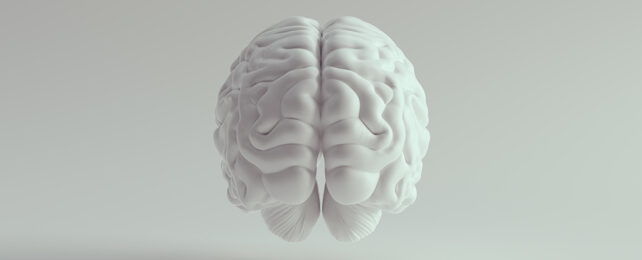The gray matter in the brain tends to attract the bulk of researchers' attention, but half of the brain is actually interconnecting material called white matter. A new study now highlights some important signaling that suggests we ought to be paying closer attention to those pale highways.
Gray matter is mostly made up of nerve cell bodies that handle the kinds of computations responsible for our speech, learning, cognition, sensation, and movement.
White matter, on the other hand, consists largely of structures called axons, which are responsible for connecting brain cells to each other and the rest of the body.
The research team behind the new study, from Vanderbilt University, used functional magnetic resonance imaging (fMRI) to look at changes in white matter while the test subjects carried out tasks – like wiggling their fingers.
Currently, white matter signals are often ignored or discarded from fMRI scans, because they're weaker and harder to spot. To overcome this, the participants in the study were asked to keep repeating their assigned actions in order to build up a trend and pattern that could be properly measured.

A clear increase in blood oxygenation-level dependent (BOLD) signals was observed in the white matter, indicating increased brain activity while tasks were performed. That's an important insight, even if we don't know exactly what's happening yet.
"We don't know what this means," says biomedical engineer Kurt Schilling. "We just know that something is happening. There truly is a powerful signal in the white matter."
In gray matter, an increase in BOLD signals means more blood flow and oxygenation in the brain. It could be the same in white matter cells: it might mean more oxygen is used while the brain is working, or it could be somehow linked to the gray matter activity.
As white matter handles connectivity, we need to understand more about what's going on here – disorders from epilepsy to multiple sclerosis can emerge when that connectivity breaks down.
"The signal is changing," says Schilling. "It's changing differently in different white matter pathways and it's in all white matter pathways, which is a unique finding."
Future studies could look at these white matter signals in more detail, especially in relation to health issues such as Alzheimer's disease. The researchers are also keen to examine the biological causes of this activity.
This neglect of white matter activity is something the researchers want to see changed in the future. These signals are useful indicators of brain activity rather than background noise, the team behind the study argues.
"For 25 or 30 years, we've neglected the other half of the brain," says Schilling.
The research has been published in PNAS.
